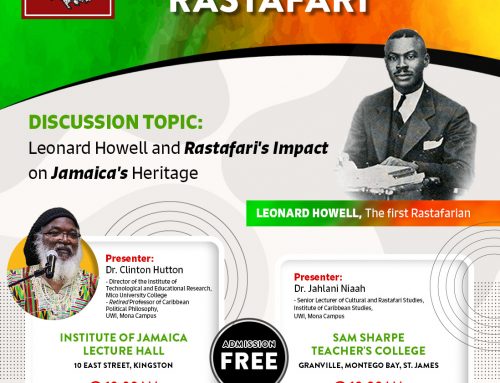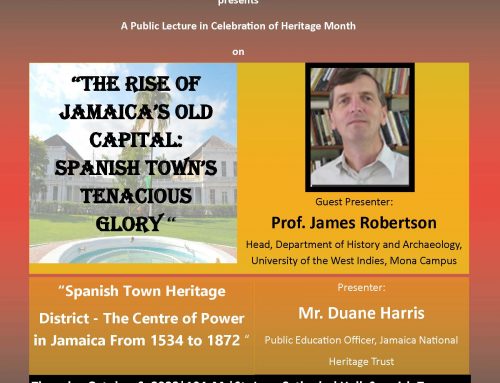
On Tuesday October 31, 2017, the JNHT hosted its second Headquarters House Lecture in the former Legislative Chamber at its offices at 79 Duke Street. The Headquarters House Lecture is a special lecture staged annually at the offices of the JNHT in October to end the Heritage Month activities. It seeks to bring attention to Headquarters House by highlighting important events or personalities which have had some association with the building.
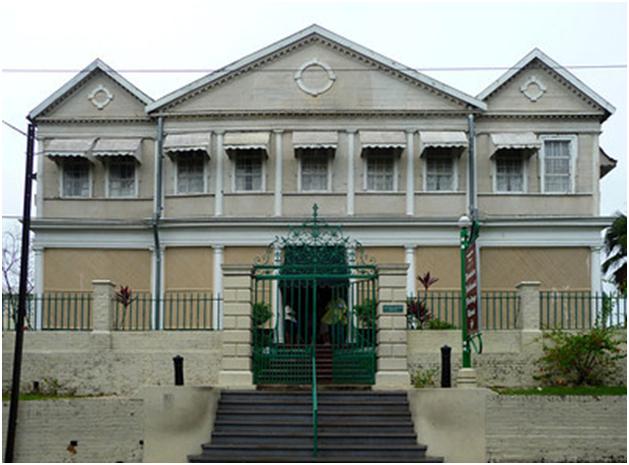
Headquarters House today, formally a residence, then a military headquarters then the seat of the legislature and now the office of the Jamaica National Heritage Trust (JNHT)
Headquarters House on Duke Street has a long and notable history. Built in 1755, by Thomas Hibbert, an English merchant, as a residence until 1814 when it was acquired by the colonial authorities and became the headquarters of the Military in Jamaica and hence its name. Owing to its role as a military building, it was used to plan strategies to put down major rebellions such as the Christmas Rebellion of 1831 (led by Sam Sharpe) and the Morant Bay Rebellion of 1865 (led by Paul Bogle). In 1872, when Kingston became the capital of Jamaica, Headquarters House became the legislature and remained so until 1960 when the legislature was transferred to the George William Gordon House, the current Houses of Parliament. Headquarters House contains several pieces of interesting furniture such as the desks used by the representatives and other pieces of artefacts which are of importance to the heritage of Jamaica. Interestingly, the Paul Bogle Statue which was on the pedestal in front of the Morant Bay Court House is now housed at the Headquarters House as well as two life-size portraits of Edward Eyre and George William Gordon. What is certain is that the JNHT has very important reminders of the Morant Bay Rebellion among its impressive collection of artefacts.
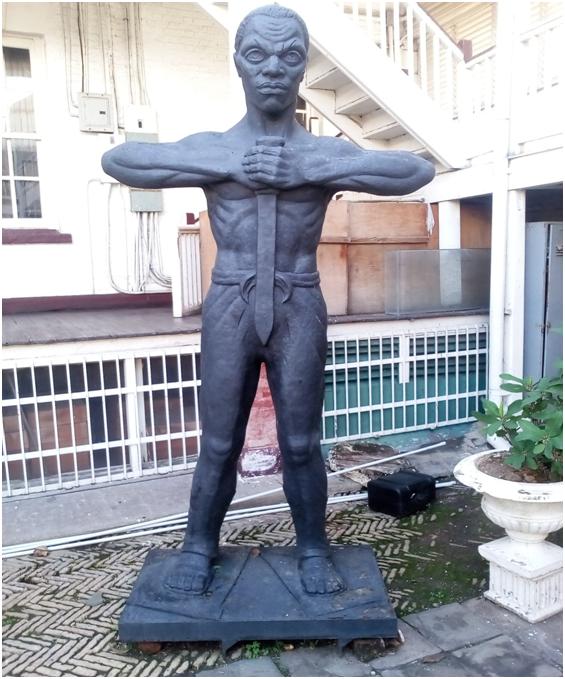
Statue of Paul Bogle located Headquarters House
This year’s lecture was entitled Rumble in Morant Bay: Edward Eyre v. George William Gordon and was expertly delivered by Dr Swithin Wilmot, lecturer in the Department of History, University of the West Indies, Mona. Wilmot pointed out that both men had contrasting backgrounds; Eyre a staunch Anglican and firm believer in its rights and privileges as well as the status quo of the British Empire and its system of racism. As governor his job was to maintain these. Gordon, on the other hand, was of a racially mixed union and had switched allegiance from the Anglican Church and was vocal about many things including the abuses of the political system headed by Eyre. Wilmot pointed out that as Gordon became more aware of the challenges being faced by the poor and with his involvement in politics he became a staunch critic of Governor Eyre.
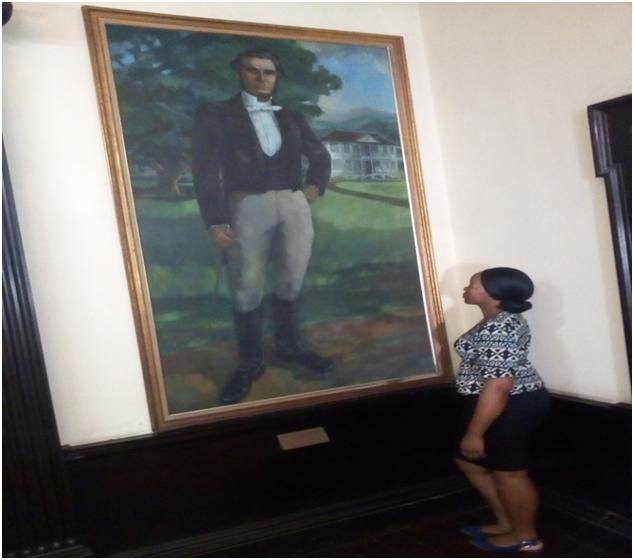
Life size painting of the Rt. Excellent George William Gordon located at Headquarters House
Dr. Wilmot painted a very colourful picture of the clashes between Gordon and Eyre where both men openly disagreed with each other and uttered very strong words to the effect. Ultimately, when the Morant Bay Rebellion occurred Eyre concluded that Gordon was involved and made the connection between Paul Bogle and Gordon and identified Gordon as being one of the leaders of the rebellion. A warrant would be issued for Gordon’s arrest. Gordon, having heard this surrendered himself to the military at Headquarters House but was turned away. Dr Wilmot then explained that upon leaving the building he was met just outside by Eyre who had him arrested and sent on a ship to Morant Bay where he would be tried and executed shortly after.
Wilmot posited that Eyre used the cover of the Morant Bay Rebellion to eliminate one of his fiercest critics which amounted to an abuse of power and murder. Although Eyre was never really punished for his gross misdeeds he was relieved of his position as governor and was never to hold public office again and for a period denied his pension. Given the aftermath of the Morant Bay Rebellion and the sweeping political and other changes which came to Jamaica such as the dis-establishment of the Anglican Church, the introduction of social services and political changes it may be seen that while Gordon was defeated and executed his ideas and desires prevailed after his death. One may conclude that he was the ultimate champion of the Rumble in Morant Bay.
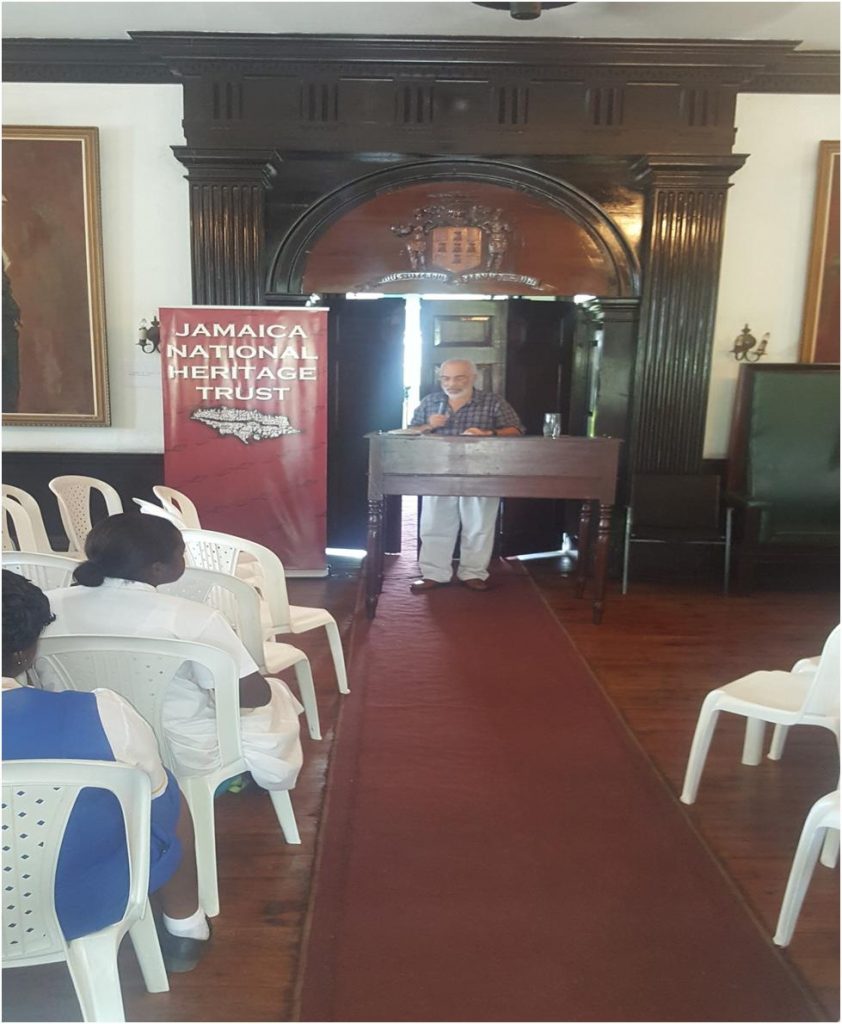
Dr. Swithin Wilmot delivers lecture Rumble in Morant Bay-Edward Eyre v George William Gordon
After the lecture the students posed several questions to Dr. Wilmot related to the topic which revealed the extent to which they were thinking about the issues raised in the lecture. Many students expressed their appreciation for the lecture as it showed them details of our heritage which is often overlooked. One teacher from St. Thomas pointed out that she was grateful for the presentation as it was her first time hearing such clear and vivid facts about the life of the Rt. Excellent George William Gordon.
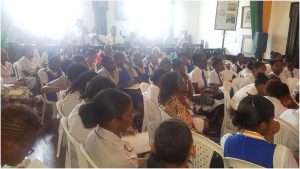
A section of the audience at the Headquarters House lecture
The objectives of the event were met. The students were treated to a rich menu of history facts which should pique their interest in the history and heritage of Jamaica. In addition, they were able to use an actual heritage site and learn of critical events which took place there. Furthermore, they should gain the full understanding of the importance of heritage sites and that our history took place with real people at real places such as Headquarters House. No longer will they see Headquarters House as just an old building, but they should see it as a place where real history unfolded.
Submitted by
Duane Harris
Public Education Officer
duaneharris@jnht.com

